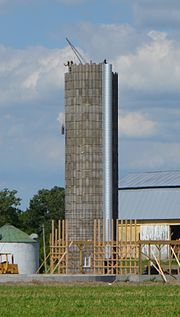 Safety is a priority. This is an age old adage always emphasized in construction given the gravity and repercussions of a minute lapse in judgement when working in the field. The health and safety of construction personnel and civilians is the #1 priority and is essential to the successful completion of the project.
Safety is a priority. This is an age old adage always emphasized in construction given the gravity and repercussions of a minute lapse in judgement when working in the field. The health and safety of construction personnel and civilians is the #1 priority and is essential to the successful completion of the project.
Since most accidents can be prevented, construction personnel should be more proactive and aware of the work hazards by employing basic common sense and discretion in collaboration with knowledge of these hazards and work- related policies on safety. Here are some of the common safety and health hazards in Concrete Construction:
• When handling fresh concrete, wear protective gear like long- sleeved shirts, rubber boots, gloves and protective eyewear. This is because fresh concrete can cause burns and eye injuries upon contact. If one comes in contact with fresh concrete, rinse it off with running water from a faucet.
• Finishers should remove clothing that has been soaked with fresh concrete, they should also wear protective clothing in the form of work boots, knee pads, long pants, gloves, and if available, knee boards.
• Remember the PPEs (Personal Protection Equipment): Gloves, hard hats, gloves, boots, eye protection, and additional miscellaneous weather protection clothing. These keep the worker safe from the short and long term hazards of working on-site
• When working in a noisy environment, ear plugs should be utilized. One will know the need for the ear plugs when the level of noise gets to a point where one worker has to raise their voice to another employee working beside them.
• Workers should wear respirators or dust masks if the work requires them to be exposed to dirt, mist, ships, or dust like when they are cutting, mixing grout, or chipping solidified concrete since it may irritate the respiratory system Home Remodeling Before And After and cause disease. Using dustless vacuum equipment and “wet” methods can also be used as an alternative, and to guarantee the correct selection and use of a respirator, trainings and seminars should be should be held for the employees.
• Construction job employers should educate and thoroughly train construction employees on fall hazards since it is one of the main causes of injuries and deaths among construction workers. The contents of the training should include the right procedures for establishing, maintaining, and removing fall protection systems, the proper use, handling, care, and maximum weight capacity of load carrying ladders.
• When using scaffolding, even for a short period of time, it should be sturdily built. Competent personnel should assess the construction of the scaffolding every day, checking that the scaffolding is upright, with a good foundation, and uniformly spaced. Employing horizontal or diagonal bracing, tying the scaffold to a solid structure like a building or a wall, and planking that overlaps support by a good 12 inches are guidelines to ensure its stability.
• The risk for falls is higher when the construction worker moves from place to place while working from a height, with this, the need to be tied off is not just an option but a real need that may mean life or death. Guard rails should be constructed all over openings in decks, and fall protections should be worn by susceptible workers at ground levels around excavations of 6 feet deep or more.
• When using electrical tools, Ground- fault Circuit Interruption Devices (GFCI) should be used to prevent electrocution, London Building Contractors List this is very useful especially when working with wet concrete or water since they are both good conductors of electricity.
• All wires, slings, cables, ropes, shackles, and other lifting equipment should be inspected for the correct size and integrity. A flying sling, rope, or cable can instantly remove limbs, and thorough inspection can help prevent such an occurrence.
Construction
